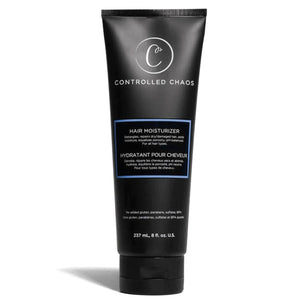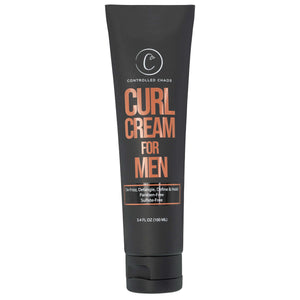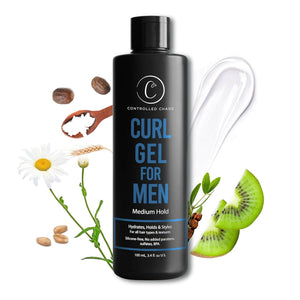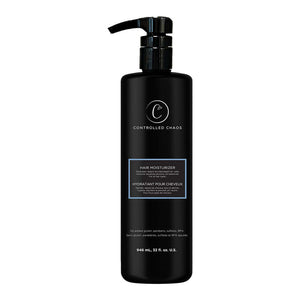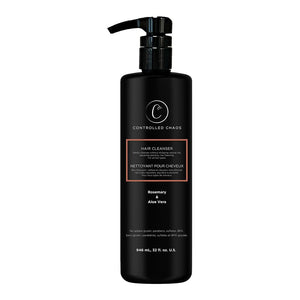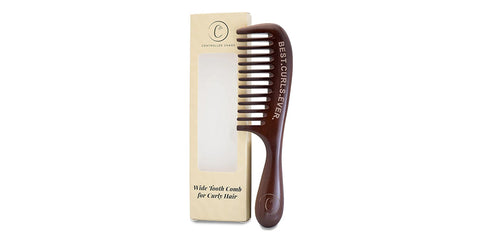

Understanding how to manage high-porosity hair can help you maintain its health and achieve a more manageable texture. Here’s a guide on how to care for and maintain high porosity hair.
Understanding High Porosity Hair
High porosity hair has gaps and holes in the cuticle layer, allowing moisture to enter and exit the hair shaft easily. This can be due to genetics, chemical treatments, heat styling, or environmental factors. As a result, high porosity hair often appears dry, frizzy and lacks elasticity.
Use Moisturizing Shampoos and Conditioners
Start with gentle, moisturizing shampoos and conditioners that are designed for high-porosity hair. Look for products containing ingredients like shea butter, glycerin, and natural oils that help lock in moisture. Avoid shampoos with sulfates, as they can strip your hair of its natural oils.
Incorporate Deep Conditioning
Deep conditioning treatments are essential for high porosity hair. They provide intensive hydration and help repair damage. Use a deep conditioner once a week or as needed. Look for products with protein and moisturizing ingredients to strengthen and hydrate your hair.
Apply Leave-In Conditioners
Leave-in conditioners are beneficial for high porosity hair because they offer extended moisture and protection throughout the day. Opt for leave-in conditioner that contain humectants like glycerin and aloe vera, which attract and retain moisture.
Seal in Moisture
Use sealing oils or butters after applying your leave-in conditioner to prevent moisture loss. Natural oils like argan, jojoba, and coconut oil can help create a barrier that locks in hydration and reduces frizz.
Avoid Heat Styling
Frequent heat styling can exacerbate the problems associated with high porosity hair. Minimize the use of heat tools such as flat irons, curling wands, and blow dryers.
Use Protein Treatments
High porosity hair can benefit from protein treatments, which help strengthen the hair shaft and repair damage. Incorporate protein-rich treatments or masks into your routine, but avoid overuse, as too much protein can make hair brittle.
Opt for the LOC or LCO Method
The LOC (Liquid, Oil, Cream) and LCO (Liquid, Cream, Oil) methods are popular techniques for managing high-porosity hair. These methods involve applying products in a specific order to maximize moisture retention. Start with a liquid (such as a leave-in conditioner), follow with oil (like argan or jojoba oil), and finish with a cream (such as a curl cream or hair butter) to lock in hydration and prevent moisture loss.
Use a Hair Steamer
Hair steaming can significantly benefit high porosity hair by opening the cuticle layer and allowing deep conditioning treatments to penetrate more effectively. Invest in a hair steamer or use a steam cap during your conditioning routine to enhance moisture absorption and improve the overall health of your hair.
Hydrate from Within
Proper hydration starts from within. Drink plenty of water throughout the day to hydrate your body and hair. A well-hydrated body can contribute to healthier hair and improve moisture retention.
Choose Products with Low pH.
High porosity hair can benefit from low pH products, which help close the cuticle layer and lock in moisture. Look for shampoos, conditioners, and treatments with a pH balance of 4.5 to 5.5. This helps maintain your hair’s natural acidity and prevents excessive dryness.
Be Mindful of Hair Color Treatments
Chemical hair color treatments can increase porosity and damage the hair cuticle. If you color your hair, opt for gentle, ammonia-free formulas and always follow up with a deep conditioning treatment to mitigate damage.
Use a Wide-Tooth Comb
When detangling high porosity hair, use a wide-tooth comb to minimize breakage and reduce stress on the hair shaft. Detangle your hair while it is damp and coated with conditioner to make the process smoother and less damaging.
Natural Hair Masks
Natural hair masks can provide deep nourishment and repair for high-porosity hair. Ingredients like avocado, honey, and yogurt are rich in vitamins and moisturizing properties. To create your own hair masks at home, mix these ingredients and apply them to your hair for 20-30 minutes before rinsing.
Consider Using a Silk or Satin Pillowcase
Silk and satin pillowcases reduce friction compared to cotton, which helps prevent breakage and split ends. These materials also help retain moisture and prevent the absorption of natural oils from your hair.
Apply a Hair Oil Treatment
Hair oil treatments can be particularly beneficial for high porosity hair. Heat up a small amount of your favorite hair oil and apply it to your hair, focusing on the ends. This can help replenish lost moisture, improve shine, and reduce frizz.
Use a Humidifier
A humidifier can add moisture to the air, which is especially useful during dry or cold seasons. This can help keep your hair hydrated and prevent excessive moisture loss. Place a humidifier in your bedroom or living area to create a more moisture-rich environment.
Avoid Alcohol-Based Products
Hair products that contain alcohol can be drying and exacerbate the issues associated with high porosity hair. Check the ingredient list of your products and avoid those with high alcohol concentrations. Opt for alcohol-free alternatives to maintain moisture balance.
Conclusion
Fixing and managing high-porosity hair involves a multifaceted approach that includes proper hydration, protection, and careful maintenance. By incorporating these additional tips into your hair care routine, you can further enhance the health and appearance of your high-porosity hair. Embrace a comprehensive regimen that addresses your hair’s unique needs, and enjoy the benefits of well-nourished, resilient locks.
How to determine if I have high porosity hair?
Try this easy water test to determine if your hair has high porosity: Place a hair strand in a glass of water. If it sinks quickly, your hair is likely high porosity. Additionally, high-porosity hair often feels dry, absorbs moisture rapidly, and may be prone to frizz.
What are the best products for high porosity hair?
The best products for high-porosity hair are those that provide intense moisture and repair. Look for moisturizing ingredients such as glycerin in shampoos and conditioners. Additionally, include sealing oils, leave-in conditioners, and deep conditioning treatments in your program.
How to repair high porosity hair naturally?
Repair high porosity hair naturally by using homemade masks and treatments. Ingredients like avocado and coconut oil can help nourish and strengthen hair. Regular deep conditioning, oil treatments, and a balanced diet also contribute to healthier hair.
What are the benefits of fixing high porosity hair?
Fixing high-porosity hair improves moisture retention, reduces frizz, and enhances strength. This results in smoother, shinier hair that is less prone to breakage and damage, making it more manageable and healthy overall.
Can high-porosity hair be treated at home?
Yes, high-porosity hair can be fixed at home with a consistent routine. Using moisturizing and strengthening products, applying natural hair masks, and following proper hair care practices can help improve the condition of high-porosity hair over time.
How long does it take to fihigh-porosityty hair?
The degree of damage and the regularity of your hair care regimen both affect how long it takes to repair high-porosity hair. Generally, noticeable improvements can take a few weeks to a few months, depending on how regularly you follow your hair care regimen.


